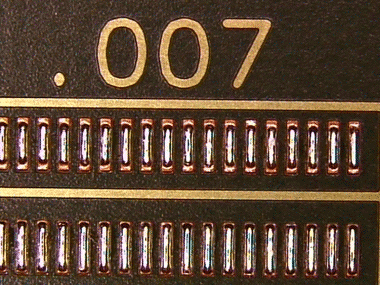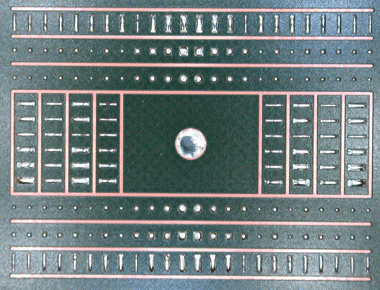|

|
|
| Ask the Experts | |||||||
|
|||||||
|
October 6, 2008 - Updated October 6, 2008 - Originally Posted Stencil Aperture Change Due to Board Finish?Is there any reason to alter apertures on stencils if board finishes change from ENIG to OSP? R.W. |
|||||||
| Expert Panel Responses | |||||||
|
Typically there is no change in stencil apertures when changing from ENIG to OSP PCB surface finish Flux activity and paste transfer volume efficiency (function of flux chemistry that determines how much paste gets transferred from the stencil to the board as opposed to getting trapped in the stencil) are crucial in wetting and spreading on OSP pads
Technical Manager - Europe Indium Corp. Currently with Indium Corporation and responsible for technology programs and technical support for customers in Europe. Over 15 yrs experience in SMT, Power, Thermal & Semiconductor Applications. Masters Degree in Industrial Engg, State University of New York-Binghamton.
Stencil apertures should not be affected by the change from ENIG to OSP. Aperture dimensions are related to the size and volume of paste applied rather than the board coating.
Manager of Assembly Technology IPC Kris Roberson has experience as a machine operator, machine and engineering technician and process engineer for companies including Motorola, and US Robotics. Kris is certified as an Master Instructor in IPC-7711 / 7721, IPC A-610 and IPC J-STD 001.
This will depend on your solder paste and inspection criteria. Some solder pastes do not wet out to the corners of pads when used with OSP finishes. If your inspection criteria require full pad coverage then you may have to go to full pad or near full pad printing. This can cause mid-chip solderballing issues if overdone.
Application Engineering Supervisor Nordson EFD Mr. Vivari has more than 15 years of electronic engineering design and assembly experience. His expertise in fluid dispensing and solder paste technology assists others in identifying the most cost effective method for assembling products.
|
|||||||
| Submit A Comment | |||||||
|
Comments are reviewed prior to posting. You must include your full name to have your comments posted. We will not post your email address. |
|
Free Newsletter Subscription
Circuitnet is built for professionals who bear the responsibility of looking ahead, imagining the future, and preparing for it. Insert Your Email Address |
|

|







